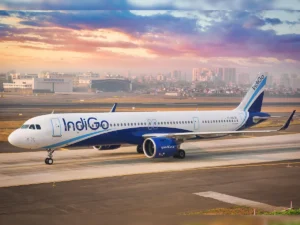India’s success in reaching the Moon’s south pole has attracted the attention of other space agencies interested in Moon water and minerals. Artificial intelligence (AI)-enabled sensors played a key role in the safe landing of Chandrayaan-3 on the Moon’s surface. This technology allows the lander to accurately predict the lunar surface, locate obstacles and land safely.
AI is rapidly becoming important in many fields, including space exploration. This technology accelerates data analysis, provides predictive insights, enables automated navigation, improves mission performance and anomalies, and uses other. Like previous space missions, AI plays an important role in India’s Chandrayaan-3 mission.
The importance of sensors
The sensor product line, which includes tachometers and altimeters, has been heralded by ISRO President S. Somnath as a significant technological advance. Cameras (including hazard avoidance and inertia-based cameras) and other sensors provide the necessary visual data, while instruments measure the speed and altitude of the lander. These data streams were combined using sophisticated computer techniques to form a complete picture of the lander’s position.
Rover and AI
AI will also play a role during the rover’s stay on the moon. Autonomous vehicles will perform tests, collect samples, and map out the most interesting routes of discovery using AI and navigation cameras. AI will play an important role in the analysis as the spacecraft collects this valuable data. AI will also help uncover previously hidden information.
India has become the fourth country to land safely on the lunar surface, joining the US, Russia and China. ISRO has identified three main goals for the mission:
– Show safe and smooth Moon landing
– Prove the rover’s mobility on the lunar landscape
– Conduct on-site scientific research
Adaptive intelligence
The real power of the AI is shown as it learns and reacts quickly during Chandrayaan-3’s gentle landing. Accuracy is maintained throughout the descent thanks to comprehensive simulation, redesigned guide diagrams, and meticulous algorithms. Despite the storm, the ship continued its journey. ISRO’s Somnath says the ship’s backup propulsion mechanism allows it to continue operating despite sensor failures.
Most notably, the Lander Hazard Detection and Avoidance Camera (LHDAC) has attracted attention. It uses AI to map the lunar surface to find potential hazards that could deflect the landing. In addition, the lander’s safe passage is protected by an array of sensors and cameras controlled by AI.
Rover Pragyan
The AI assistance in this expedition doesn’t just stop at the lander. The Pragyan lunar rover is guided by AI as it collects samples and conducts tests during the day-long adventure. Pragyan’s success on the Moon depends on its set of AI-powered cameras and antennas. An important decision lies in AI-based decision making in this task. The lander’s AI has to choose between landing vertically and moving sideways at 150 meters to avoid obstacles. The future of Chandrayaan-3 is in the hands of AI, before the eyes of the world.
ISRO’s historic moon landing was made possible by the power of AI. The successful landing of Chandrayaan-3 into vast space is a monument to the power of AI and human creativity.





